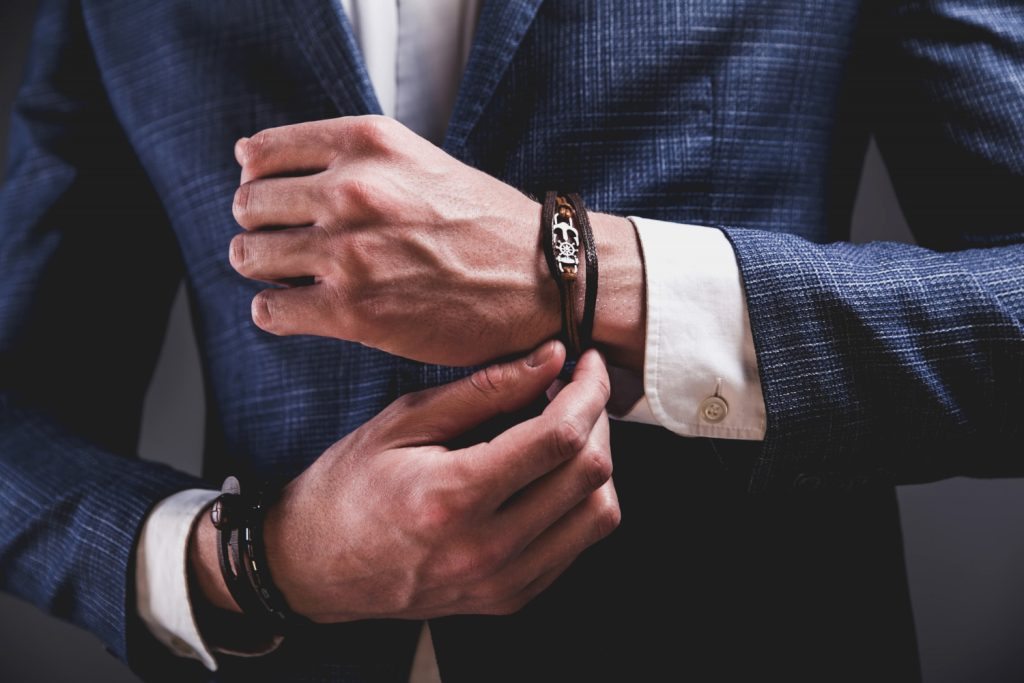If you believe that Men’s jewelry is becoming more and more popular in the twenty-first century, you need to study the rich history of men’s jewelry. It’s interesting to note that 30,000 years ago, people began to bind shells and animal teeth together to create jewelry for men. The common materials gave way to valuable metals, stones, etc. with the discoveries.
The Role of Jewelry in Men’s Lives Throughout History
Men’s jewelry has been discovered in cave carvings, paintings, ancient manuscripts, and archaeological findings, underscoring its historical significance. Jewelry was not just an accessory but also a marker of social identity and class distinction.
- Royalty and emperors: Wore gold necklaces, rings, and gemstone-studded accessories to signify their elite status.
- Priests and shamans: Used jewelry for religious and spiritual purposes.
- Warriors and soldiers: Adopted jewelry as a symbol of protection and strength.
Men’s jewelry in Ancient Times
In early civilizations, jewelry served magical and religious roles, with many believing certain pieces granted supernatural powers.
- In Croatia, a necklace made of eagle talons dating back 130,000 years was discovered.
- In North Africa, an 82,000-year-old shell necklace was found.
- In Ancient Egypt, gold and gemstones were believed to connect mortals with gods. Priests and shamans adorned themselves with jewelry to amplify their spiritual influence.
- In Ancient Greece, men wore laurel wreaths to express their allegiance to specific deities.
- In Rome, soldiers wore leather and metal cuffs as symbols of divine protection.
Men’s jewelry in the Middle Ages
With the rise of patriarchal values, men’s jewelry became more distinct from women’s jewelry. Signet rings grew in popularity, serving as symbols of loyalty among noble families
- Trade between Europe and Asia introduced new gemstones that were soon integrated into gold and silver jewelry.
- Jewelry remained intertwined with superstitions, with men wearing pieces engraved with mystical symbols to ward off evil spirits.
also read: DECEMBER BIRTHSTONE GUIDE
Men’s jewelry in the Renaissance
The Renaissance era was a golden age for men’s jewelry:
- European kings were often depicted in elaborate jewelry, as seen in royal portraits.
- Explorers and sailors wore gold hoop earrings, which could serve as payment for their burial in the event of death at sea.
- In India, Mughal emperors adorned themselves with extravagant jewelry to showcase their authority and wealth.

Men’s jewelry in the Industrial Age and Beyond
The Industrial Revolution made jewelry more accessible to the masses, but also introduced new fashion guidelines
- In 1860, Cecil B. Hartley published “The Gentlemen’s Book of Etiquette,” which emphasized that men’s jewelry should be functional rather than purely decorative.
- Wristwatches became a staple of men’s fashion.
- Tie pins and cufflinks gained prominence as formal accessories.
- By the 20th century, minimalist jewelry styles dominated, with men opting for subtle pieces like pocket watches and thin gold chains.
However, in the 1960s, cultural shifts led to a resurgence of bold jewelry styles, with rock, punk, and hip-hop movements influencing trends.
Visit royalty shop and enjoy men’s best jewelry
Men’s jewelry Today: Style and Symbolism
Today, men’s jewelry is more than just an accessory—it’s a reflection of personality and identity. From chains and rings to bracelets and statement pieces, every item carries significance.
- Many men wear engraved rings to symbolize relationships or heritage.
- Leather and metal bracelets maintain their historical legacy while fitting modern fashion.
- Custom jewelry with meaningful symbols and personal engravings continues to rise in popularity.
No matter your style, men’s jewelry remains a powerful way to express individuality. Choose pieces that resonate with you and embrace a legacy of elegance and history.
Resources of Men’s jewelry:
FAQ about Men’s jewelry:
What jewelry do most men wear?
Nowadays, men can wear rings, bracelets, metal neclaces.
What jewelry to get a guy?
best type of jewellery for men really depends on your own personal style
Should a man wear gold or silver?
the most important thing is to wear what makes you feel confident and comfortable

0 Comments